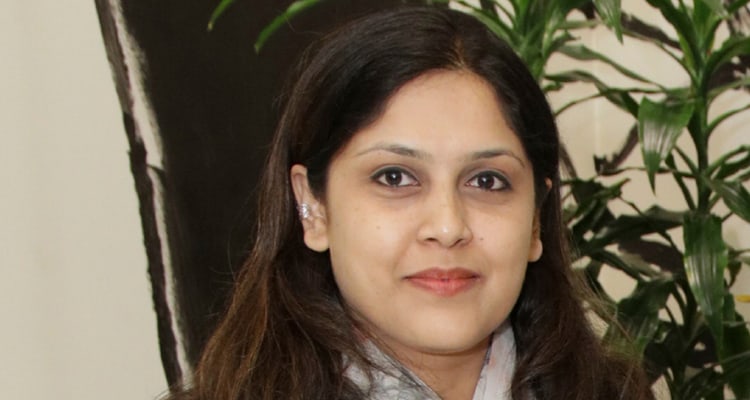Dr Swati Subodh- Co-founder, One Million for One Billion (1M1B) Foundation highlights the various aspects which will be crucial during and after the pandemic
The onset of the COVID-19 pandemic saw the medical fraternity, technology innovators, manufacturers, regulators, policy makers, and many others scurry into action to meet the demands of an unprecedented public health crisis. The past 20 months has seen the emergence of a new normal balancing surveillance, innovations for diagnosis and therapeutics, monitoring and prevention while ensuring equitable access.
Today healthcare is part of everyday parlance and we’re collectively more aware of the emergent threats due to microbial evolution, zoonotic transmissions and effects of climate change on health. This aside, health needs are transitioning from quick-fix solutions to sustained long-term interventions as age and disease demographics continue to change globally. Highlighting a few, the number of people above 65 years is expected to double and constitute nearly 17 per cent of the world population by 2050, whereas an estimated 2 billion people will need at least 1 assistive product by 2030. Chronic disease incidence rate is rising and is disproportionately affecting people in low- and middle-income countries with 41 million people succumb to chronic diseases annually accounting to 71 per cent of deaths globally. Undoubtedly our healthcare needs to improve in quality, efficiency and response time to individual and public emergencies.
Care models will transition from institutional-care to home or community-centric care leaving institutions like hospitals increasingly catering to acute and emergency cases only. We had a glimpse of this during the pandemic when mobility, access and availability posed severe limitations. Real-time monitoring of a person’s health parameters, and relaying timely advise will become increasingly crucial.
Triaging the critically ill requiring specialist care from those that can be managed remotely will optimize health resources, skewed doctor:population ratios (1:1511 against WHO norm of 1:1000) and nurse:population ratios (1:670 against WHO norm of 1:300). India has an estimated 18,99,228 hospital beds corresponding to a low 1.4 beds per 1,000 population, and shortfall of public health facilities. These fault lines have been exposed during the pandemic. Trained caregivers equivalent to physician-assistant, and auxiliary nursing staff can undertake preliminary investigations and non-critical patient-care to close the gap and ensure last mile health access. It will also generate frontline jobs that would economically benefit the communities and improve the overall health index, especially in vulnerable populations.
Preventive and predictive healthcare: Messaging and campaigns have been used successfully during the pandemic and needs to sustain for preventive healthcare. Digital tools and platforms for awareness need to scaled alongside bio-safety equipment, health-data records, and geospatial hot-spot mapping for an integrated system to prevent or manage exigencies potentiating disease outbreaks.
At the individual’s level, tracking of health parameters of ‘at-risk’ individuals can prevent disease onset or medical emergencies.
Nextgen therapeutics, especially preventatives, can manage and potentially control, disease outbreaks in vulnerable populations without adding to the risk of developing drug resistance.
Precision healthcare: Health data is collected through integrated devices like fitness trackers, biosensors (for biofluids, skin, implants and prosthetics) and conducive gels to assess biochemicals, stress indicators, and mechano-acoustics patterns. This can manage an individual’s nutritional, physical, emotional and social determinants of health. People with chronic conditions like diabetes, asthma and cardiac issues, those on rehabilitation therapy, those genetically susceptible or those with cognitive impairments can be managed remotely by their healthcare providers through these interfaces. The pandemic prompted innovators, on one end, to repurpose and re-align their existing platforms and solutions, and on the other, hospitals networks commenced telemedicine to engage with their patients. This digital infrastructure needs to be leveraged even after the pandemic.
The advent of genomic technologies for public health interventions and decisions was probably an irrevocable addition to healthcare. Genomics in diseases requiring long treatment regimens, such as tuberculosis, can significantly reduce side-effects by suggesting optimal dose and drug for the patient. This can improve patient compliance and shorten the treatment duration. Options like these need to be considered seriously if India is to meet its target of eliminating TB by 2025.
Data generated through connected devices can help in building diagnosis, predicting disease outcomes, assessing treatment efficiency etc. Artificial Intelligence has been used during the COVID-19 pandemic in screening chest X-Rays to distinguish COVID patients from those with other respiratory diseases. Scaling AI enabled solutions is increasingly important due to lack of trained manpower and diagnostic services.
In India, health is a state subject, thus state-level advocacy for programmatic and policy integration is essential for a population-scale implementation of these interventions, especially in geographical hot-spots and disease endemic regions.
Finally, to enable equitable access to health services, alternate financing models need to be scaled to adapt and adopt solutions for the changing healthcare needs in a population where 70 per cent of healthcare costs are still out-of-pocket expenses. Blended finance models designed and backed by public-private partnerships (PPP) need acceleration.
- Advertisement -


